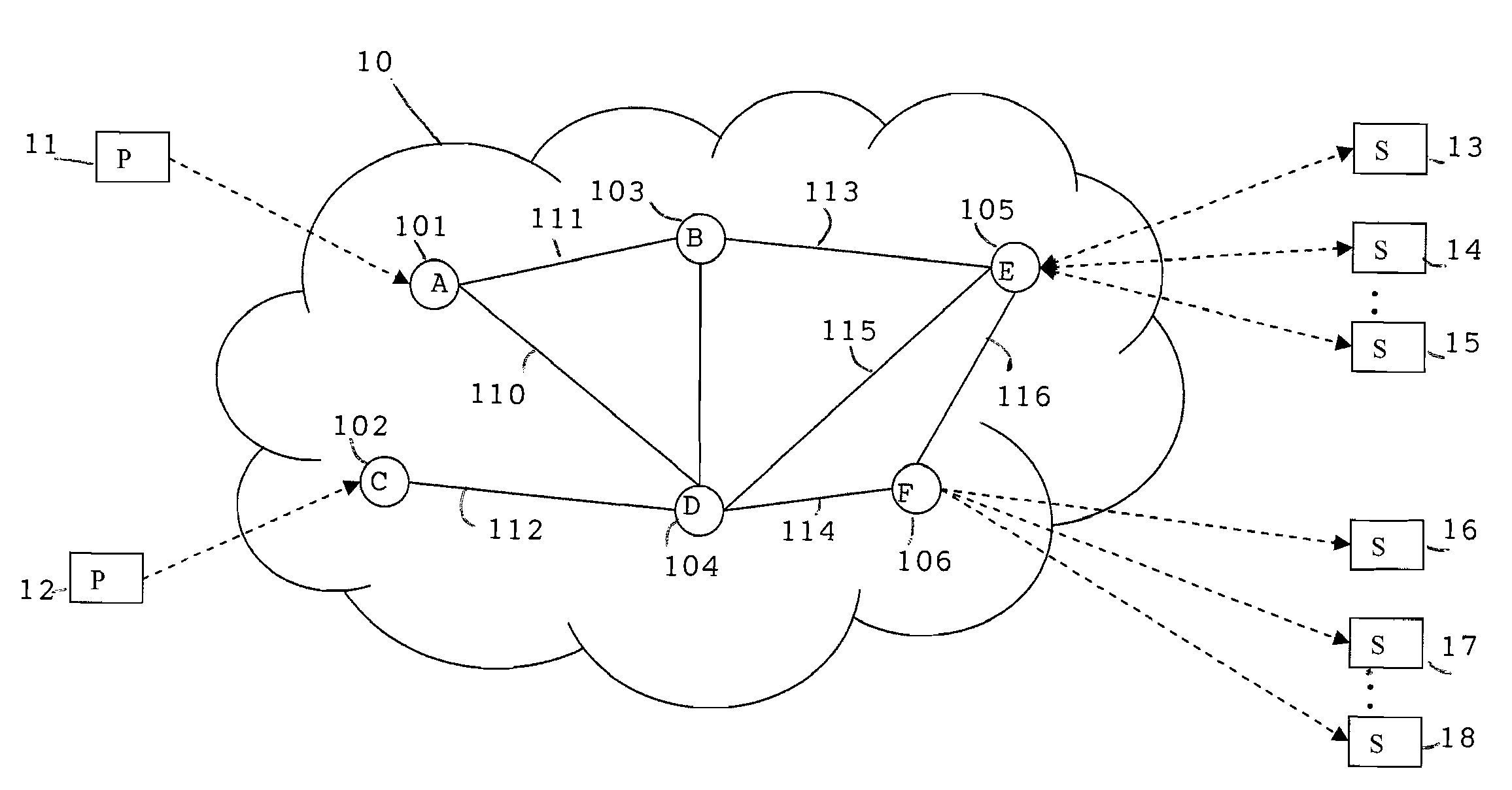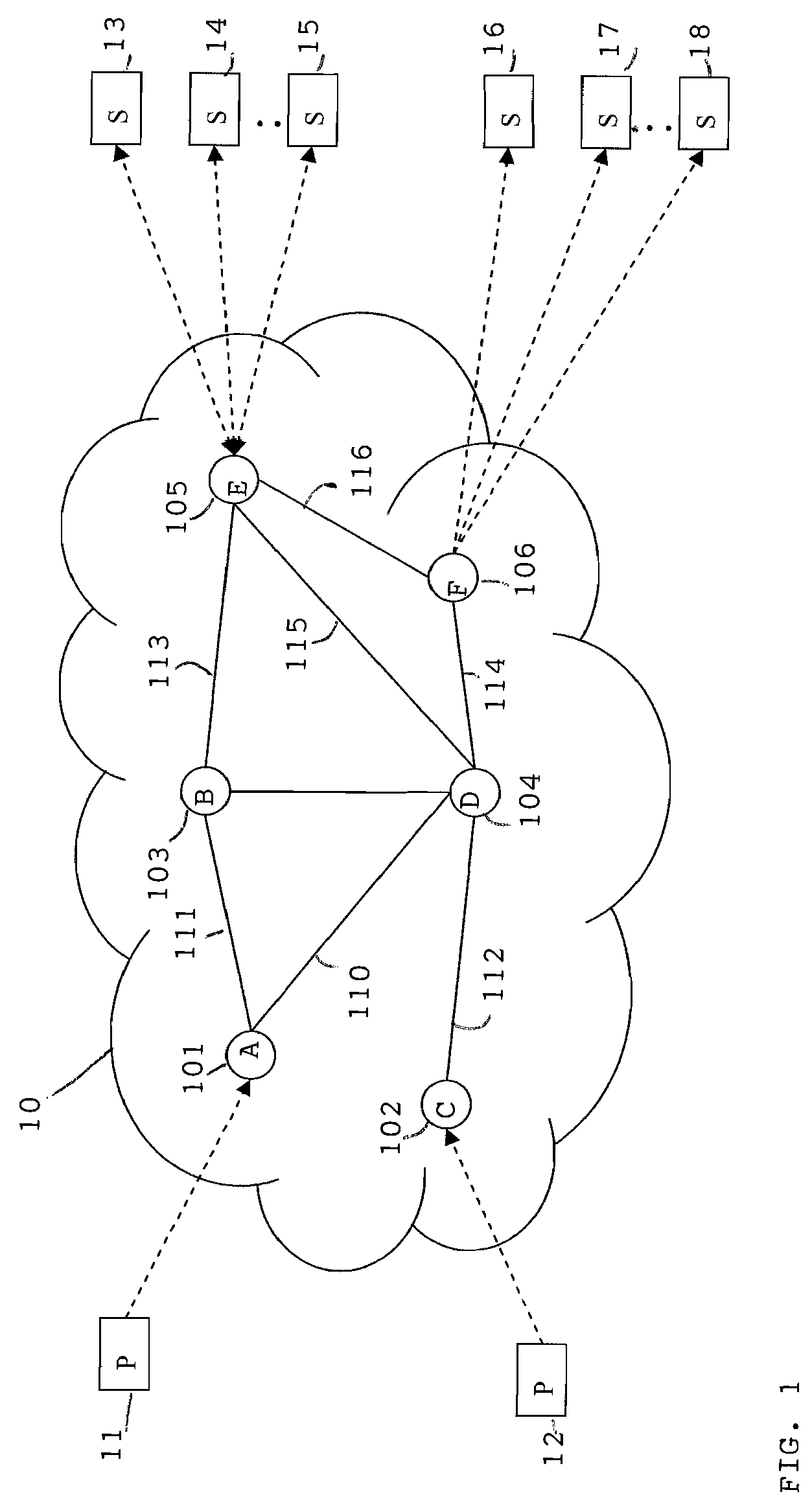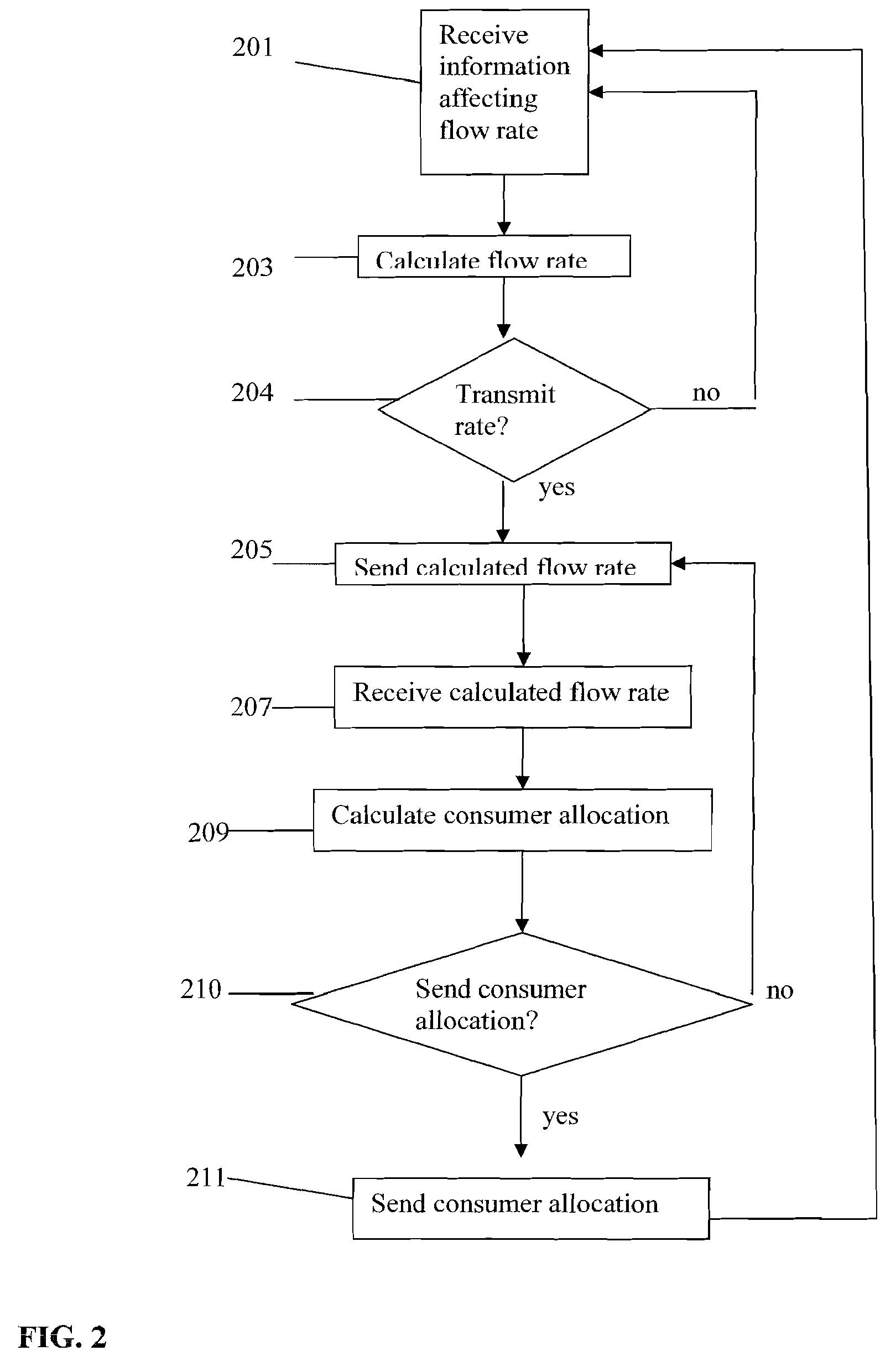System and method for distributed utility optimization in a messaging infrastructure
- Summary
- Abstract
- Description
- Claims
- Application Information
AI Technical Summary
Benefits of technology
Problems solved by technology
Method used
Image
Examples
Embodiment Construction
[0018]The inventive system and method for the Lagrangian Rates, Greedy Populations approach (LRGP) provides a scalable and efficient distributed system to maximize total system utility. The solution involves partitioning the optimization problem into two types of subproblems: a greedy allocation for consumer admission control and a Lagrangian allocation to compute flow rates, and dynamic linking of the subproblems in a manner that allows tradeoffs between consumer admission and flow rates while satisfying related constraints. LRGP enables the nodes of the distributed system to collaboratively optimize aggregate system performance in a self-optimization scheme that is applicable to any autonomic event-driven infrastructure. The system exercises resource control in two ways: (1) controlling the rate allocation to a flow at its source node; and, (2) controlling admission of consumers.
[0019]FIG. 1 illustrates a message infrastructure 10 between producers, representatively illustrated at...
PUM
 Login to View More
Login to View More Abstract
Description
Claims
Application Information
 Login to View More
Login to View More - R&D
- Intellectual Property
- Life Sciences
- Materials
- Tech Scout
- Unparalleled Data Quality
- Higher Quality Content
- 60% Fewer Hallucinations
Browse by: Latest US Patents, China's latest patents, Technical Efficacy Thesaurus, Application Domain, Technology Topic, Popular Technical Reports.
© 2025 PatSnap. All rights reserved.Legal|Privacy policy|Modern Slavery Act Transparency Statement|Sitemap|About US| Contact US: help@patsnap.com



